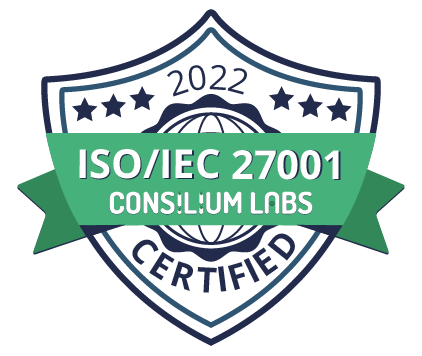Four lessons from our webinar with Luisa de Gouveia, Group Head of Legal Operations at Sky
In our recent webinar, we were joined by Luisa de Gouveia, Group Head of Legal Operations at Sky, to explore how a modern legal ops function can turn partnerships into a genuine force multiplier for the business.
Luisa has a rare perspective: she started her career in commercial contracts, spent time at Radiant Law, moved in-house to Sky, and now leads a multi-disciplinary legal operations team. Her remit spans outside counsel, financial management, technology and AI, learning and development, data reporting, and governance and project management.
For in-house legal teams and legal operations professionals thinking about how to structure legal ops, work with ALSPs, and get more value from tech providers, four themes stood out.
1. Legal Operations Needs a Clear Remit, Not “Everything That Isn’t Legal Advice”
Every legal team is doing legal operations. The question, as Luisa put it, is whether you have a dedicated legal ops team, or whether it’s happening informally on top of busy day jobs.
At Sky, legal operations is a team of six supporting a large UK and European legal function. To be effective, they’ve had to be very deliberate about what sits in their remit:
- Outside counsel and ALSP management, including panel relationships and how teams work together.
- Financial management, working closely with finance to capture third-party spend and forecast accurately.
- Learning and development, designing and coordinating the legal team’s training programme with external firms, internal teams and specialist providers.
- Technology and AI, leading on legal tech and AI tools, from selection and pilots through to implementation.
- Data and reporting, turning system data into useful reporting for leaders.
- Governance and project management, including onboarding, central mailboxes, policies, the legal Knowledge Hub, and project management support for large matters.
Without that clarity, there’s a real risk of becoming “the Department of Everything”, and legal ops loses focus and impact.
2. Trust and Feedback Differentiate a Partnership from a Supplier
Luisa’s first hallmark of a strong partnership is trust, closely followed by regular communication even when there is no live matter.
In practice, this looks like:
- Lawyers feeling able to pick up the phone for a quick sense check without fearing they’ve opened a new matter or triggered a bill.
- Regular check-ins that aren’t tied to a specific transaction, so the relationship doesn’t drift into purely transactional territory.
- Candid feedback in both directions: clients sharing when work has missed the mark, and providers sharing where client processes are creating friction.
Both Luisa and Ian highlighted that feedback is most powerful when it is specific and timely, not just a generic “everything’s fine”. The aim is to create enough trust that constructive feedback is seen as an investment in the relationship, not a criticism.
3. For ALSPs, Invest in the Setup Phase and Expect the Model to Evolve
ALSP relationships are different from many traditional law firm engagements. They often involve:
- High volumes of contracting and operational work
- Direct interaction with both lawyers and business stakeholders
- A strong emphasis on continuous improvement
That makes the setup phase particularly important.
Luisa emphasised a few practical steps:
- Gather the right information
Work types, volume, complexity, templates, playbooks, intake routes and cycle times all help ALSPs design the right model. - Be honest where you don’t have data
Smaller teams or less mature functions may not have robust data. Being candid about this allows providers to help you gather it, rather than scoping around guesses. - Treat the first 6–12 months as an embedding and learning phase
Even with good scoping, there will be exceptions and refinements. The goal isn’t perfection on day one, but a trajectory of improvement. - Recognise that scope will change
Priorities, business structures and risk appetites evolve. A resilient partnership can flex around those changes, rather than being constrained by the original slide deck.
Done well, ALSPs don’t just take work off the table, they help you stabilise the contracting function and then tell you how to improve it.
4. Make Technology and AI Partnerships Ongoing, Not One-Off Events
Technology and AI were another major theme in the discussion. Sky’s legal ops team leads on legal tech, including AI pilots, matter management, billing and contract tools.
Luisa recommended treating tech providers as long-term partners rather than one-off purchases:
- Schedule regular business reviews (e.g. quarterly or twice-yearly) to:
- Review usage data and adoption patterns
- Look at recurring tickets and underlying issues
- Understand the product roadmap and upcoming changes
- Review usage data and adoption patterns
- Assign internal ownership of each major tool. Someone needs to collect feedback, triage issues, and make sure actions agreed with vendors actually happen.
- Be realistic about change capacity. Implementing 40 or 50 tools in a year might look ambitious on paper, but from a change-management point of view, it’s rarely sustainable.
- For new vendors, be upfront about where their product sits in your roadmap. It’s better to say “not this year” than to half-start a trial and never give it proper attention.
The first 6–12 months after implementation are especially important: you’re still learning how the tool is used, which teams are deriving value, and where training or configuration needs to be reinforced.
Final Thoughts: Collaboration Across the Ecosystem
Luisa ended with a call for more collaboration across the legal ecosystem, in-house teams, law firms, ALSPs and tech providers.
In areas like AI, there is a lot of noise, hype and genuine change happening at once. Law firms and ALSPs often have more capacity to experiment with tools; clients want guidance; tech vendors are iterating quickly. Sharing learnings and working together on experiments and pilots can help everyone move forward, faster.
Partnership, in this context, isn’t about choosing one model over another. It’s about connecting the right mix of people, providers and platforms, and then building the trust, feedback loops and governance that allow that mix to evolve over time.




















.png)
.jpg)




.jpg)









.png)
.png)




.png)






























.jpg)


